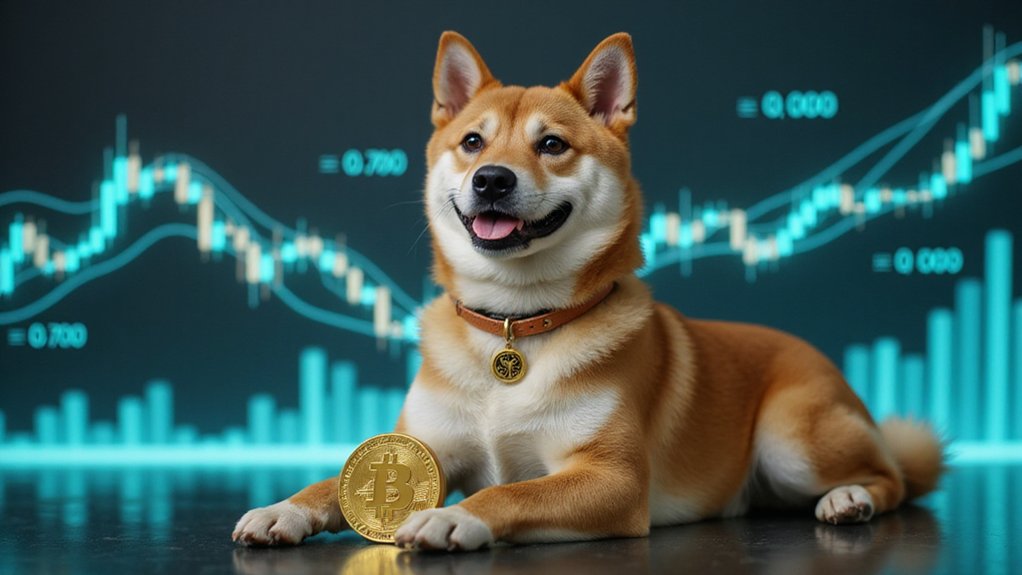Creating an NFT requires five essential steps: prepare high-quality digital content with verifiable copyright ownership, select an appropriate blockchain network (Ethereum remains standard, though alternatives offer lower fees), establish a crypto wallet like MetaMask with sufficient funds, choose a marketplace aligned with your goals (OpenSea dominates with a 2.5% fee), and execute the minting process with metadata and royalty parameters. The seemingly straightforward digital transformation belies a complex intersection of artistic intent and blockchain economics.

Traversing the labyrinth of non-fungible token creation requires neither arcane knowledge nor coding expertise—merely a methodical approach to digital asset transformation. The aspirant NFT creator begins with content preparation—selecting original artwork, music, or video files of impeccable quality (preferably high-resolution JPGs, PNGs, or MP4s) while guaranteeing unimpeachable copyright ownership. After all, the blockchain’s immutability makes intellectual property infractions rather permanent affairs.
Creating NFTs demands not arcane wizardry but methodical precision—transforming digital assets through organized steps while respecting intellectual property’s permanence on the blockchain.
Selecting an appropriate blockchain network follows, with Ethereum reigning as the de facto standard despite its occasionally astronomical gas fees. Alternatives like Polygon or Binance Smart Chain offer respite from transaction costs, though one must weigh this savings against marketplace ubiquity. (The environmental implications of one’s choice merit consideration as well—proof-of-stake networks consume substantially less electricity than their proof-of-work counterparts.) This selection is crucial as the consensus mechanism used by the blockchain will determine how your digital assets are validated and registered.
The prospective minter must then establish a crypto wallet—MetaMask being the predominant choice—funded with sufficient cryptocurrency to cover both minting costs and marketplace fees. One might reasonably allocate additional funds for gas price volatility, particularly during periods of network congestion. These digital wallets serve as secure vaults that encrypt your NFTs for safekeeping during transactions across blockchain networks.
Marketplace selection presents another decision node, with platforms differentiated by fee structures, audience demographics, and curatorial approaches. OpenSea commands the largest user base with its 2.5% transaction fee, while specialized venues like Foundation offer exclusivity at premium prices.
The minting process itself involves uploading the digital asset, appending detailed metadata, selecting a token standard (ERC-721 for unique pieces, ERC-1155 for editions), and executing the transaction. Smart contracts automatically generate the token, with gas fees fluctuating based on network demand. Once created, your NFTs can be directly minted into your wallet without requiring extensive coding knowledge.
Post-creation, the NFT creator sets pricing parameters—fixed price, auction format, or declining price mechanisms—and implements marketing strategies to maximize visibility. Royalty arrangements, typically 5-10% of secondary sales, ensure perpetual revenue streams from subsequent transactions, assuming the marketplace honors such programmatic directives.
The digital artifact therefore transmutes into a tokenized asset, joining the expanding universe of blockchain-verified creative works—a transmutation as financially speculative as it is technologically fascinating.
Frequently Asked Questions
How Much Does It Cost to Mint an NFT?
NFT minting costs vary dramatically across blockchains—from Ethereum’s eye-watering $50-500 (contingent on network congestion) to Solana’s comparatively microscopic $0.0081.
Cost-conscious creators might opt for Polygon’s free lazy minting or Cardano’s modest $0.044-0.39 range.
Beyond blockchain fees, one must factor in marketplace commissions (OpenSea’s 2.5%), smart contract development, and potential marketing expenses.
Strategic approaches like off-peak minting or batch processing can mitigate these financial hurdles.
Can I Sell My NFT on Multiple Marketplaces?
Yes, creators can list their NFTs on multiple marketplaces simultaneously, though this strategy warrants careful consideration.
While technically feasible—thanks to blockchain interoperability standards like ERC-721—the practice may dilute scarcity value and potentially damage creator credibility.
The prudent approach involves either maintaining consistent pricing across platforms or offering unique assets on each marketplace.
Different platforms attract distinct collector demographics, so a targeted, reputation-conscious distribution strategy typically yields superior returns than indiscriminate cross-platform saturation.
Do NFTS Have Environmental Impacts?
NFTs do indeed have substantial environmental impacts.
On Proof-of-Work blockchains like Ethereum (pre-2022), a single NFT generates approximately 211kg of CO₂ throughout its lifecycle—equivalent to offsetting 3.52 trees.
The primary culprits are energy-intensive processes: minting (~83kg), secondary sales (~51kg), and transfers (~30kg).
Mitigation strategies include switching to Proof-of-Stake systems, adopting renewable energy sources, utilizing low-energy blockchains like Ronin, and participating in carbon offsetting initiatives.
What Happens if the Platform Hosting My NFT Shuts Down?
If a platform hosting an NFT shuts down, the NFT itself remains securely on the blockchain—ownership is unaffected.
However, the associated metadata and images may become inaccessible if not stored on decentralized systems like IPFS.
Market value might decline due to decreased liquidity and accessibility.
Savvy collectors mitigate these risks by using self-custodial wallets and ensuring their assets utilize decentralized storage solutions for complete independence from any single platform’s fortunes.
Are NFT Sales Taxable Income?
Yes, NFT sales are taxable.
The IRS treats them as property dispositions, triggering capital gains taxes based on the difference between selling price and cost basis.
Classification matters greatly—most NFTs face standard capital gains rates (0-20% long-term), while those qualifying as “collectibles” under Section 408(m)(2) incur the punitive 28% maximum rate.
Each transaction requires meticulous reporting on Form 8949 and Schedule D—a paperwork burden disproportionate to many artists’ actual profits.









